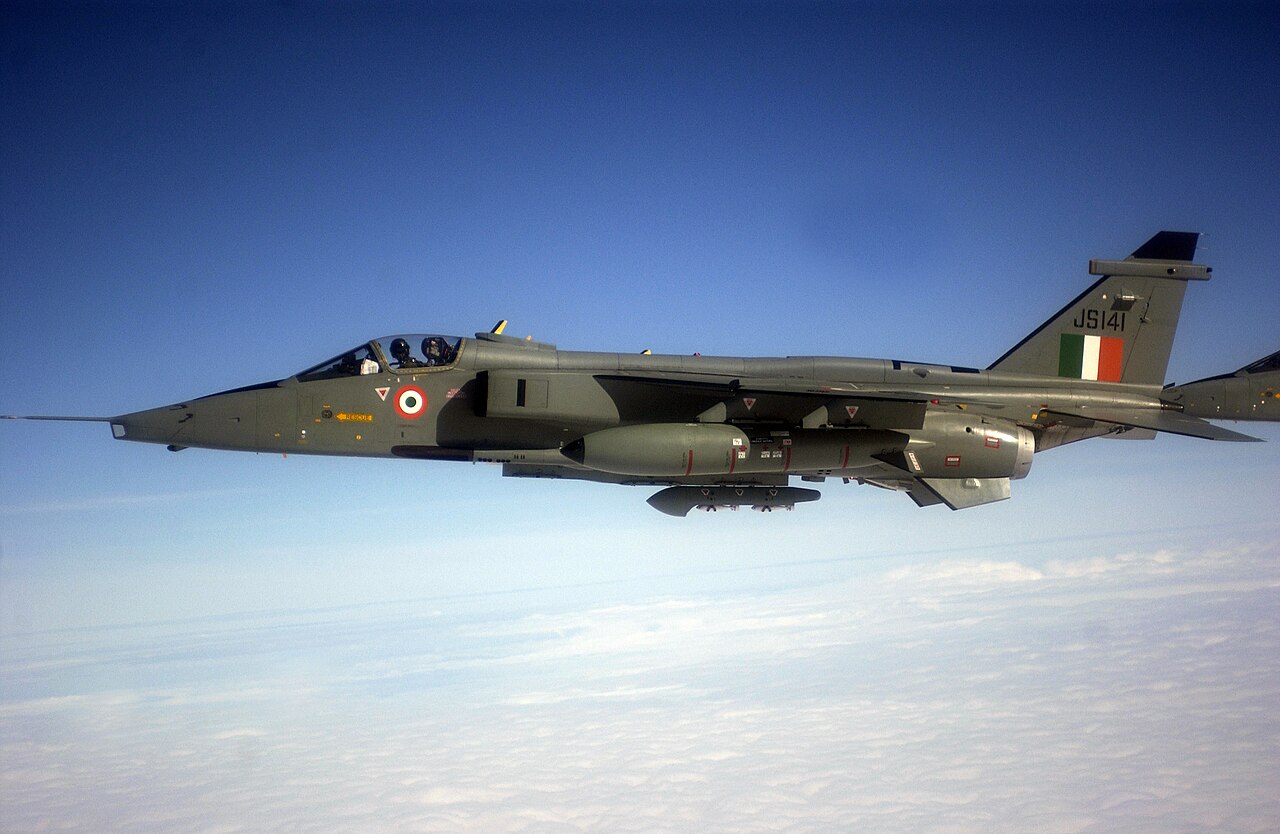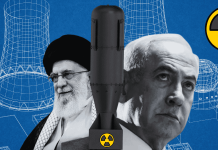The Indian Air Force (IAF) is planning to retire the last of its MiG-21 squadrons by the end of 2025. When that happens, the Anglo-French SEPECAT Jaguar will be the oldest fighter jet in its fleet.
The fighter jets, christened ‘Shamsher’, meaning ‘Sword of Justice’ in Persian, have completed 45 years of service in the IAF. The recent crash of a Jaguar trainer in Jamnagar, which resulted in the death of one of the pilots, has sparked concerns about the safety of the legacy aircraft.
Media reports have called for the immediate phasing out of this swept-wing, twin-engine, supersonic attack aircraft developed in the 1960s. Even public opinion has been against the aging fleet, and many people have called them the new MiG-21s, which towards the fag end of their life, suffered a slew of crashes.
Even though the IAF is the only operator of this low-flying, sea-skimming fighter bomber, the jet’s terrain-hugging flying capability is unmatched by any fighter in its fleet.
The underpowered fighter jet has spawned a slew of jokes about how it can fly only because of the Earth’s curvature. But the fighter jet that has been an important part of India’s nuclear triad will be relevant for at least another decade.
“As the aircraft age, they all go through the same thing. Jaguar is the new MiG-21 because that is the oldest fighter in the IAF. Just that,” a former Jaguar test pilot told the EurAsian Times on condition of anonymity.
F-16 Shootdown: Why U.S. Could Be Behind The 2nd Confirmed Crash Of Ukraine’s Fighting Falcon: OPED
He concurred that maintenance-wise, engines are troubling the Jaguars. India had purchased 120 Jaguars. Of these, 40 were purchased directly from BAE Systems, and the rest were manufactured by the Indian aircraft manufacturer Hindustan Aeronautics Limited (HAL). The IAF operates six aircraft squadrons at Ambala, Gorakhpur, Jamnagar, Bhuj, and Suratgarh.
Its two engines, though underpowered, have been considered safe for the pilots as it is unheard of for two engines to flame out at the same time. Presently, the other twin-engine fighter jets in the IAF are Russian-origin MiG-29, Sukhoi Su-30MKI, and French Rafales.

In addition, the aircraft is known for its rock-steady flight, low-level handling capabilities, excellent cockpit view, and sophisticated controls.
On November 26, 2010, the Indian Ministry of Defence (MoD) issued a tender for re-engining 80 of its newest Jaguars. American engine manufacturer Honeywell offered its F125IN, and Rolls-Royce offered the Adour Mk 821, an upgraded version of Jaguar’s existing engine, Adour Mk 811.
The estimated cost of the project was around US$ 3 billion. Each Honeywell F125N engine was to deliver 43.8 KiloNewtons (kN) of thrust, significantly higher than the 32.5 kN of the Jaguar’s current Rolls-Royce engine. This would have boosted the aircraft’s range much beyond 400 km and would have helped the aircraft to fly across the mountains with a higher rate of climb.
However, the high cost of the engines forced the Air Force to drop the project.
A test pilot from the Jaguar fleet confirmed that apart from the engines, “it is a fairly stable fleet.”
With the retirement of the Jaguars by the UK’s air force, spare part acquisition became a problem. India procured airframes, engines, and multiple types of frequently used spare parts from France, Oman, and the United Kingdom.
Upgraded Jaguars
Another retired Air Marshal from the IAF and a Jaguar pilot opined: “The IAF has extended the operational life of the Jaguars with mid-life upgrades, including modern EW suites, radar warning receivers (RWRs), smart weapons, and avionics and survivability systems. Despite aging, modernization has ensured that Jaguars remain a cost-effective strike option, complementing newer fighter jets in India’s inventory.”
Squadrons 5 and 14 were composed of the Jaguars bought from the UK in fly-away condition.
Apart from off-the-shelf Jaguars purchased from the UK, the rest of the Jaguars were manufactured by HAL and equipped with Digital Attack Ranging Inertial Navigation (DARIN). It is a truly Indian aircraft in the sense that its airframe, mission computer, and source code are all made in India. The home-built Jaguar included upgraded engines, newer avionics, EW suite, reconnaissance pods, and 10 maritime Jaguars with their A-S radar and Anti-Ship Missile.
Then, HAL manufactured 37 more upgraded Jaguars with DARIN-II. The induction took place as late as 2010. The original aircraft purchased from the UK, equipped with NavWASS, were upgraded to DARIN-II standard.
The 27 Squadron, operating from Gorakhpur, was the first unit to comprise Indian-made Jaguars. The 224 Squadron in Jamnagar was the last unit to get the home-built ground attack fighters.
“Indian Jaguars built and upgraded by HAL are solid. The last batch of Jaguars were built by HAL in 2002-2009. They are not going out anytime soon. Direct supply (from BAE) aircraft will start retiring in this decade. Items or LRUs (Line Replaceable Units are the components that can be removed or replaced on an aircraft) that need obsolescence management have been managed by HAL for a long, as OEM (Original Equipment Manufacturer) support is less. Recent accidents could have occurred on any aircraft type. They have nothing to do with the vintage of IAF’s platforms,” a retired Jaguar pilot explained.
Jaguars upgraded to DARIN II were equipped with more reliable Inertial Navigation and GPS, an Advanced Laser Designation Pod (LDP), Laser-Guided Bombs, an autopilot, new displays, and HOTAS (Hands and Throttle on Stick), which allows the pilot to control the aircraft without leaving the stick.
Jaguar pilots swear by its navigation. The entire mission play runs alongside the pilot on the multi-functional display, which brings greater accuracy to the pilot’s decision. The head-up display’s (HUD) ‘highway-in-the-sky’ was new for its time. The Highway-in-the-Sky feature on the HUD is a unique feature for the Jaguar, and the entire runway can be replicated on the HUD, assisting in landings even in zero visibility.
It can be used for target identification or to display a simulated runway to the target. The Rear cockpit HUD was another Jaguar feature.
Jaguar’s auto-bombing also makes it easier for pilots to bomb accurately. One can simply keep the trigger pressed while maneuvering the aircraft, and the bomb is released automatically when the aircraft reaches the release range to the Designated Mean Point of Impact (or the center of the target).
DARIN-III Helping Jaguars To Pack More Punch
Now, DARIN-I Jaguars have been upgraded to DARIN-III standards. The work on the upgraded DARIN-III has been done in India, and it includes AESA radar, new-generation AAMs (air-to-air missiles), ASMs (Anti-ship missiles), sensor-fused armament, and extended-range LGBs.
The DARIN III includes an open-system architecture mission computer, multi-functional displays, an engine and flight instrument system, a new fire control radar, a geodetic height correction system, and an inertial navigation system with multiple satellite navigation.
The DARIN III Jaguars have also been equipped with the Israeli EL/M-2052, which improves their defensibility against electronic warfare jamming. By having multiple transceiver modules (TRM), each transmitting on a different radio frequency, the EL/M-2052 also reduces the probability of enemy radar warning receivers.
In other words, the Jaguar DARIN III would be more difficult to detect and jam.
“DARIN-III is a capable avionics upgrade. The Jag pilots are happy with the upgrade,” the Jaguar pilot added.
DARIN-III avionics support the integration of advanced air-to-air missiles like ASRAAM and smart air-to-surface munitions such as the RAMPAGE, Maverick, and Harpoon missiles; Paveway precision-guided munitions; Joint Standoff Weapon; and the DRDO-developed SAAW (Smart Anti-Airfield Weapon).
The Elbit Systems-developed Rampage is a stand-off weapon with all‐weather capabilities designed for deep penetration strikes. Powered by a solid propellant rocket motor, it has a range of 150–250 km, a flight altitude of 3,000–40,000 ft, and a top speed of Mach 1.6. The claimed Circular Error Probable (CEP) is 10 m.
SAAW is an analog of the Israeli Spice glide bomb. When released from a height of 12.8 km and flying at 0.9 M, it has a range of over 90 km. Its CEP is 7 meters when using a combination of inertial navigation and GPS + GAGAN. With an IIR seeker for terminal homing, the CEP reduces to 3 meters.
Other new weapons integrated include Textron CBU-105 “sensor fuzed” Smart Anti-tank Cluster Bomb and DRDO’s 500-kg General Purpose Bomb.
The Last Of The Jaguars In Town
The IAF intends to begin phasing out its Jaguar strike aircraft starting in 2027-2028, with the complete phase-out scheduled by 2035-2040. The delay in the delivery of the indigenous Light Combat Aircraft Tejas Mk-1A also makes Jaguar an important part of the IAF’s operational capability.
The advent of long-range surface-to-air Missiles has made high-flying aircraft more vulnerable, making low-flying tactics relevant to evading radars. Despite their low thrust and the IAF’s lack of investment in new engines, Jaguars will be relevant for at least the next decade.
U.S.-Supplied C-130J, C-17 Come “Under Attack” Over Myanmar; What Really Happened With IAF Aircraft?
The Russia-Ukraine conflict has further underscored the relevance of low-level penetration in contested airspace. Ukrainian MiG-29s, Su-24, Su-25, and Su-27 fighters invariably fly to their standoff weapon launch points at very low altitudes, below the adversary’s radar horizon, to escape detection. Nearing the launch point, they zoom up, launch their weapons, and once again “hit the deck.”
Jaguar’s “lo-lo-lo combat radius of action” is 350 nautical miles (650 kilometers), which means it can travel this distance while flying low. This is one of the highest for low-flying strike aircraft.
Vijaindra K Thakur, a retired Jaguar pilot, puts it succinctly: “The Jaguar is a capable aircraft that packs a punch. It’s unique in its ability to fly at low heights over a long range. At 200 ft outside AWACS coverage, a Jaguar can get stealthier than an F-22 Raptor at higher altitudes.”
A present Jaguar pilot summed it up well: “The Jaguar has been upgraded in the past, and as we speak, it is being upgraded to meet the demands of modern warfare; it is definitely relevant to future combat in the sub-continent and will prove its worth if called to the party. Retiring it now would be a strategic and economic blunder. Not to mention, it would leave a vacuum in the country’s defense that present industrial production will take decades to fill.”




